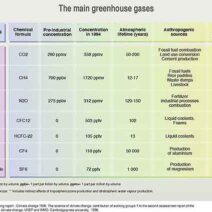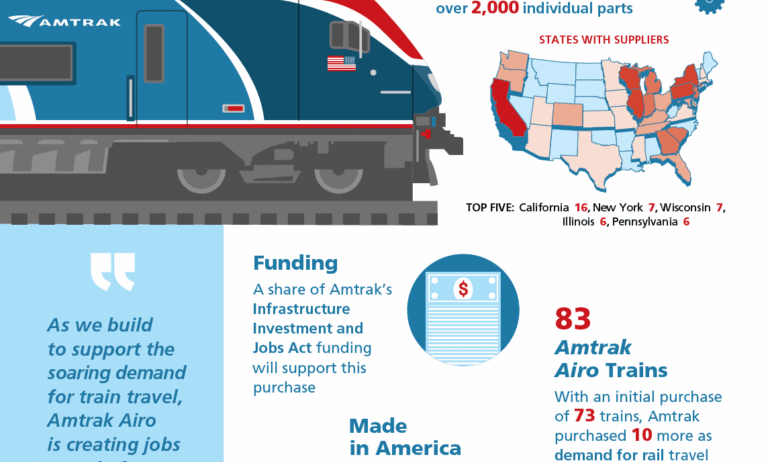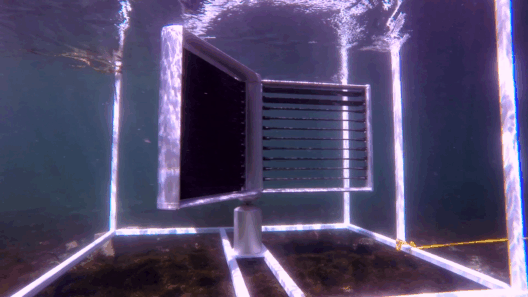Climate change and global warming are two interlinked phenomena that pose significant threats to our planet’s ecological balance. The increasing reliance on fossil fuels and high greenhouse gas emissions from various modes of transportation exacerbate these issues. With these challenges looming, the introduction of the Amtrak Airo™ service brings forth a pivotal opportunity for the rail industry to pivot towards sustainability. This article examines the potential implications of Amtrak Airo on reducing climate change and global warming while navigating through critical themes like environmental advantages, technological innovations, and the broader impact on transportation trends.
Understanding the Environmental Benefits of Rail Travel
Rail travel has long been recognized as one of the more environmentally friendly modes of transportation. When juxtaposed against automobiles and airplanes, trains typically display markedly lower carbon emissions per passenger mile. Amtrak Airo is poised to amplify these environmental benefits. By optimizing energy efficiency, the new fleet aims to reduce the carbon footprint associated with rail travel significantly.
The Airo trains boast advanced aerodynamics designed to minimize drag, thus reducing energy consumption during operation. Furthermore, they are equipped with hybrid-electric propulsion systems that incorporate alternative fuel sources, potentially including biofuels and hydrogen. While traditional rail relies heavily on diesel engines, such innovations present the possibility of a much smaller greenhouse gas footprint. This transition represents an essential step towards a more sustainable rail network, capable of addressing the climate crisis.
Technological Innovations Paving the Way for Sustainability
One of the keystones of Amtrak Airo’s success lies in its commitment to integrating cutting-edge technologies that enhance operational efficiencies. These enhancements include regenerative braking systems that harness kinetic energy during train deceleration, thereby converting it back into usable power. Such systems significantly reduce energy wastage and contribute to overall energy savings.
Moreover, the incorporation of real-time monitoring systems allows for data-driven management of train operations. These intra-operational enhancements enable more efficient scheduling, optimized routing, and reduced idle times, which collectively diminish emissions. By adopting these technologies, Amtrak Airo is not merely a reactive solution; it’s a proactive approach aimed at mitigating climate change through intelligence in operation.
In addition, the new railcars are designed with energy-efficient features including LED lighting, improved insulation, and climate control systems that use less energy. These factors contribute holistically to making Amtrak Airo a greener alternative, showcasing how modern engineering can directly affect environmental stewardship.
The Societal Shift Towards Sustainable Transportation
To effectuate a genuine change in our transportation habits, we must observe a cultural shift in public perception toward rail travel. The convenience of flying and driving has long overshadowed alternative forms of transportation. However, initiatives like Amtrak Airo present an essential effort to entice passengers through enhanced onboard experiences and significant reductions in travel-related carbon emissions.
As Amtrak Airo emphasizes not only efficiency but also passenger comfort and onboard amenities, it is strategically positioned to appeal to the environmentally-conscious traveler. With spacious seating, modern design, and the potential for onboard dining options that showcase local and organic produce, the service advocates for an attractive alternative. In doing so, it encourages more people to opt for rail travel over car or air, which can lead to collective emissions savings.
Government policies and incentives also play a crucial role in this sociocultural transition. The integration of Amtrak Airo into broader mass transit initiatives can foster a collaborative framework aimed at reducing carbon emissions across several industries. Through public investment in infrastructure, promotion of eco-friendly transportation, and provisions to encourage businesses to adopt similar sustainability initiatives, rail travel can become a pivotal player in climate change mitigation.
Amtrak Airo: A Step in the Right Direction, Yet Challenges Persist
While Amtrak Airo embodies a forward-thinking approach to environmentally-friendly transportation, certain challenges must be acknowledged. Although rail travel as a whole typically presents a lesser environmental impact, the entire transition process is fraught with potential hurdles, including the initial carbon cost of manufacturing new trains and the energy required for electrification across underserved networks.
Moreover, the efficacy of Amtrak Airo in reducing overall greenhouse emissions will depend on a larger commitment to renewable energy sources. The decarbonization of the electricity grid is paramount for hybrid systems to deliver on their promises. The transition from fossil fuel dependency to renewable energies within the broader electricity network enhances the sustainable profile of rail travel, maximizing the potential for real climate action.
Conclusively, Amtrak Airo presents an auspicious opportunity to invigorate rail travel as a cornerstone of sustainable transportation. The blend of technological innovations and environmentally-conscious practices marks a significant leap toward reducing our societal carbon footprint. While challenges remain, continued investment and public engagement in sustainable initiatives can steer us closer to combating climate change and global warming. The journey towards a greener future indeed hinges on our collective commitment to embracing and advancing such transformative projects.






